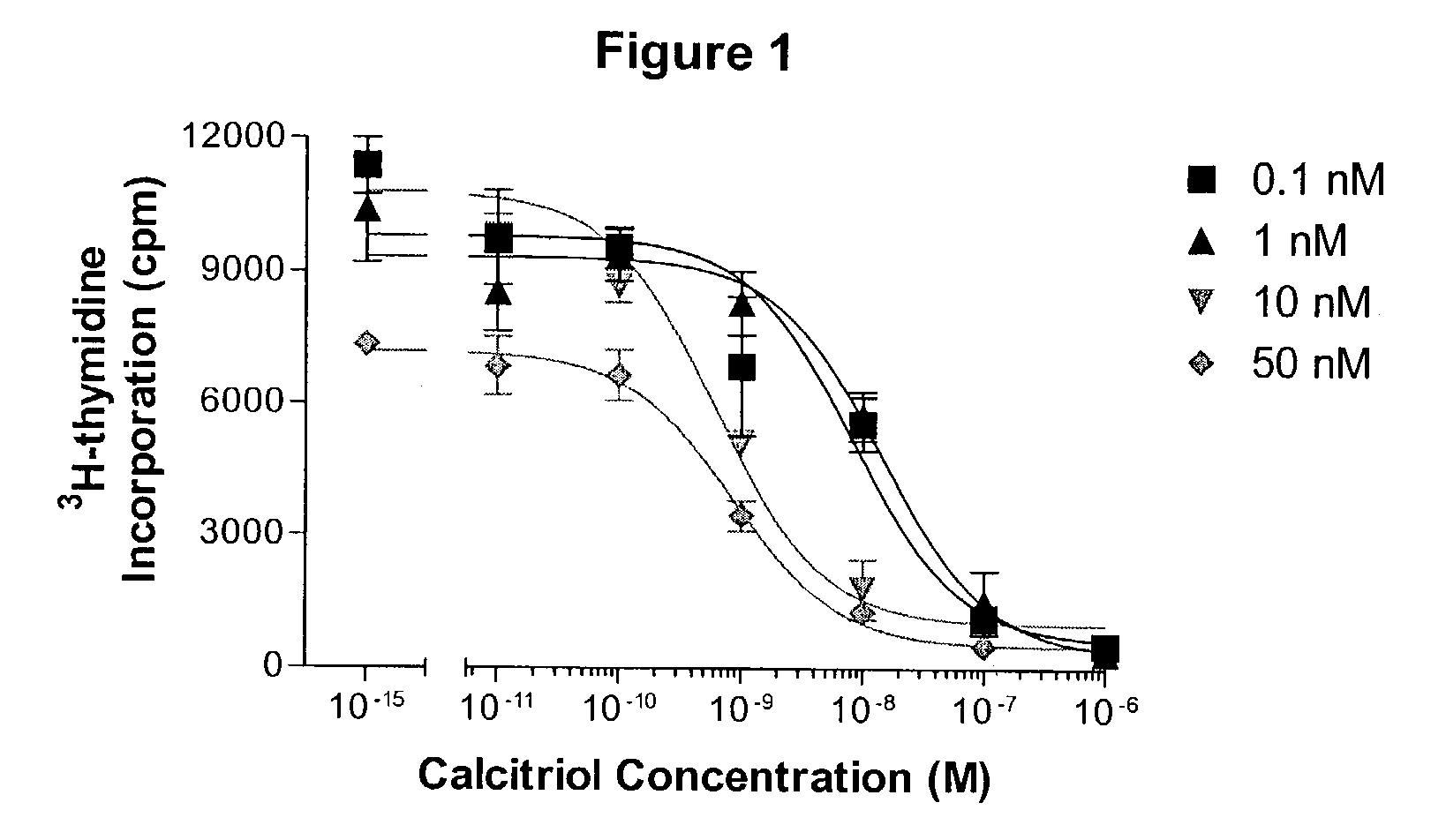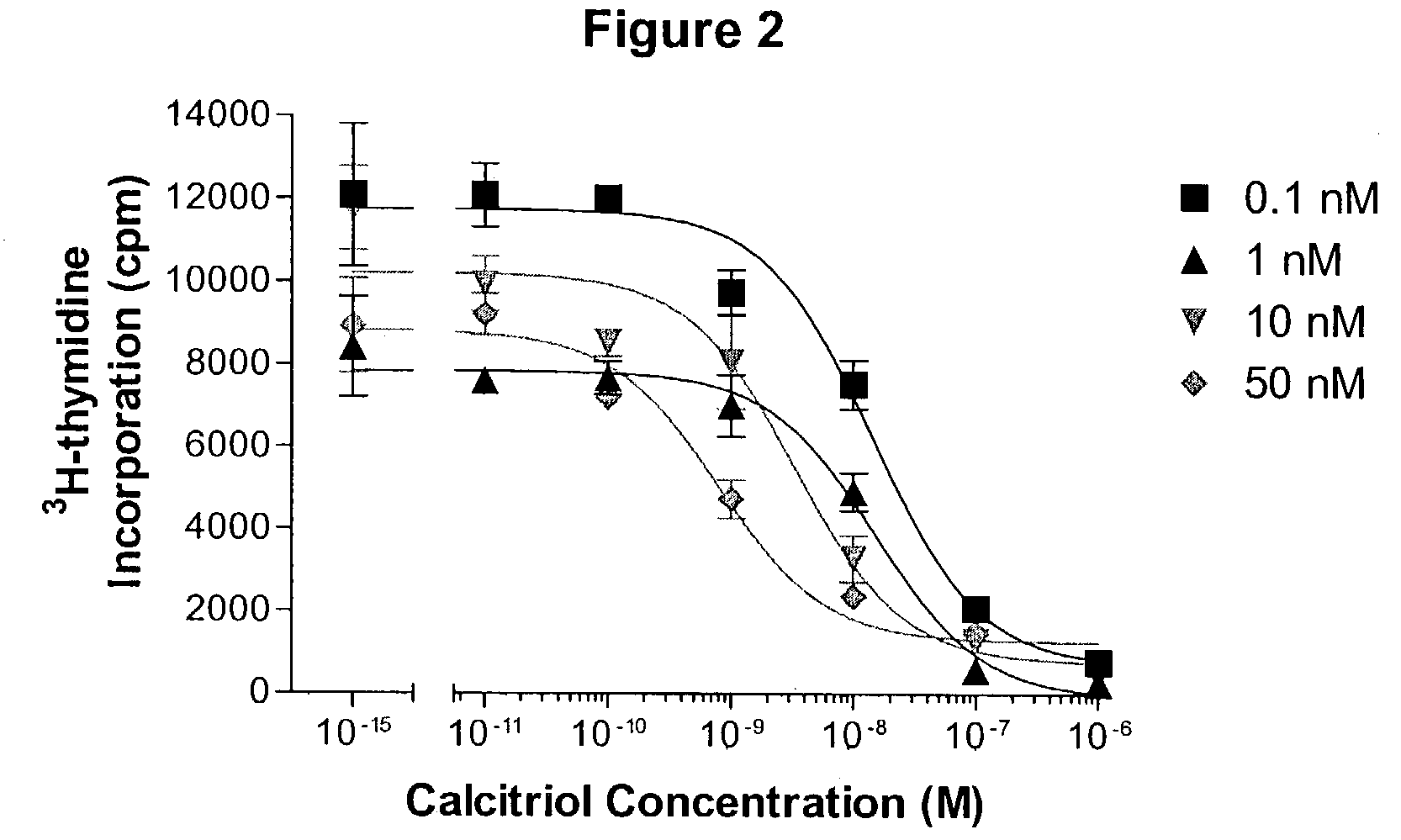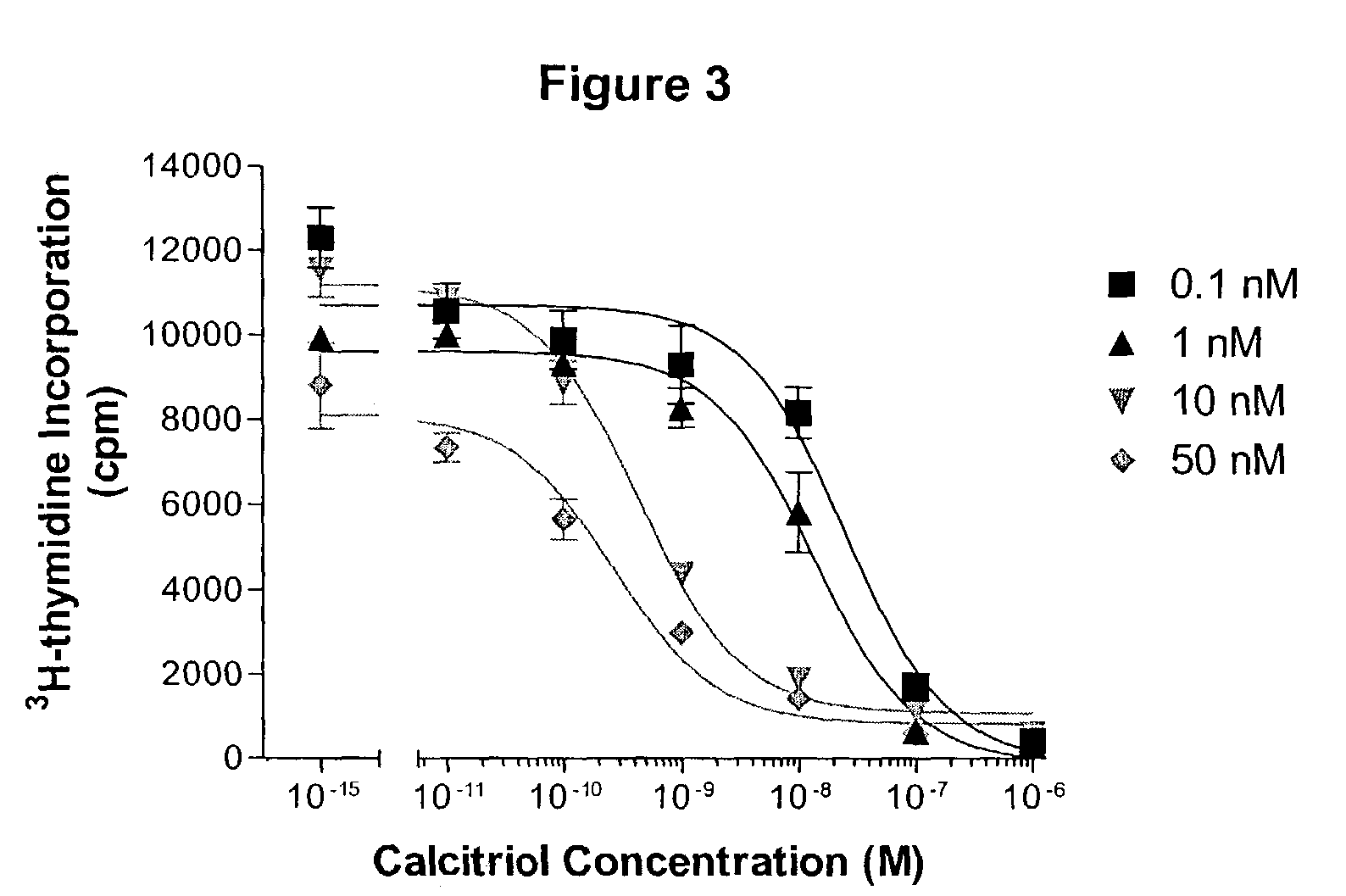24-sulfoximine vitamin D3 compounds
a technology of vitamin d3 and sulfoximine, which is applied in the field of new drugs to achieve the effects of reducing the risk of hypercalcemic toxicity, and reducing the risk of toxicity
- Summary
- Abstract
- Description
- Claims
- Application Information
AI Technical Summary
Benefits of technology
Problems solved by technology
Method used
Image
Examples
example 1
General Procedure for the Preparation of Compounds of the Formula V, wherein R7 is Hydrogen and C22–C23 is a Single Bond
[0182]A flame-dried 10-mL recovery flask equipped with a magnetic stir bar, a reflux condenser a septum along with an Ar balloon was charged with the appropriate sulfoximine VII (50 mg, 0.32 mmol) and dissolved in 0.6 mL anhydrous acetonitrile to give 0.5 M solution. Then the flask was placed into an oil bath at 60° C. To this solution was added Et2NTMS (72 μL, 0.38 mmol) via a syringe dropwise over several minutes. After the addition was complete, the mixture was allowed to stir at 60° C. for ca. 30 minutes. When thin layer chromatography (TLC) showed total consumption of the starting material, the flask cooled down to room temperature. The mixture was concentrated in vacuo to give the N-trimethylsilyl sulfoximine product, essentially pure as determined by 1H NMR. This was used without further purification.
[0183]A flame-dried 10-mL recovery flask equipped with a m...
example 2
General Procedure for the Preparation of C,D-Ring Ketones III, Wherein R7 is Hydrogen and C22–C23 is a Single Bond
[0188]
General Deprotection Method
[0189]An argon purged 5 mL polypropylene vial equipped with a magnetic stir bar, a septum along with an Ar balloon was charged with appropriate triethylsilyl protected alcohol (30 mg, 0.065 mmol) dissolved in 1.6 mL anhydrous acetonitrile to give ca. 0.04 M solution. To this well-stirred solution was added 0.26 mL of HF (0.46 mmol, 49% aqueous solution) via syringe at room temperature and the mixture was then allowed to stir at room temperature in the dark for 4 hours. TLC showed the completion of the reaction. This reaction mixture was diluted with ether (25 mL) and saturated solution of NaHCO3 was added until no more carbon dioxide was liberated. The reaction mixture was then rinsed into a separatory funnel with ethyl acetate and was extracted with ethyl acetate (4×25 mL). The combined extracts were washed with water (1×25 mL) and brine...
example 2 (
Example 2(b)
Preparation of CD-Ring Ketone (+)-III(a′)
[0194]
[0195]A solution of triethylsilyl protected alcohol (+)-V(a′) (30 mg, 0.065 mmol) dissolved in 1.6 mL anhydrous acetonitrile was prepared to give ca. 0.04 M solution. To this well-stirred solution was added 0.26 mL of HF (0.46 mmol, 49% aqueous solution) via syringe at room temperature and the mixture was then allowed to stir at room temperature in the dark for 4 hours. TLC showed the completion of the reaction. This reaction mixture was diluted with ether (25 mL) and saturated solution of NaHCO3 was added until no more carbon dioxide was liberated. The reaction mixture was then rinsed into a separatory funnel with ethyl acetate and was extracted with ethyl acetate (4×25 mL). The combined extracts were washed with water (1×25 mL) and brine solution (1×25 mL), dried over Na2SO4 and filtered. The filtrate was concentrated in vacuo to give the crude product. Flash column chromatography eluted with 100% ethyl acetate afforded 20...
PUM
| Property | Measurement | Unit |
|---|---|---|
| temperatures | aaaaa | aaaaa |
| temperatures | aaaaa | aaaaa |
| temperature | aaaaa | aaaaa |
Abstract
Description
Claims
Application Information
 Login to View More
Login to View More - R&D
- Intellectual Property
- Life Sciences
- Materials
- Tech Scout
- Unparalleled Data Quality
- Higher Quality Content
- 60% Fewer Hallucinations
Browse by: Latest US Patents, China's latest patents, Technical Efficacy Thesaurus, Application Domain, Technology Topic, Popular Technical Reports.
© 2025 PatSnap. All rights reserved.Legal|Privacy policy|Modern Slavery Act Transparency Statement|Sitemap|About US| Contact US: help@patsnap.com



